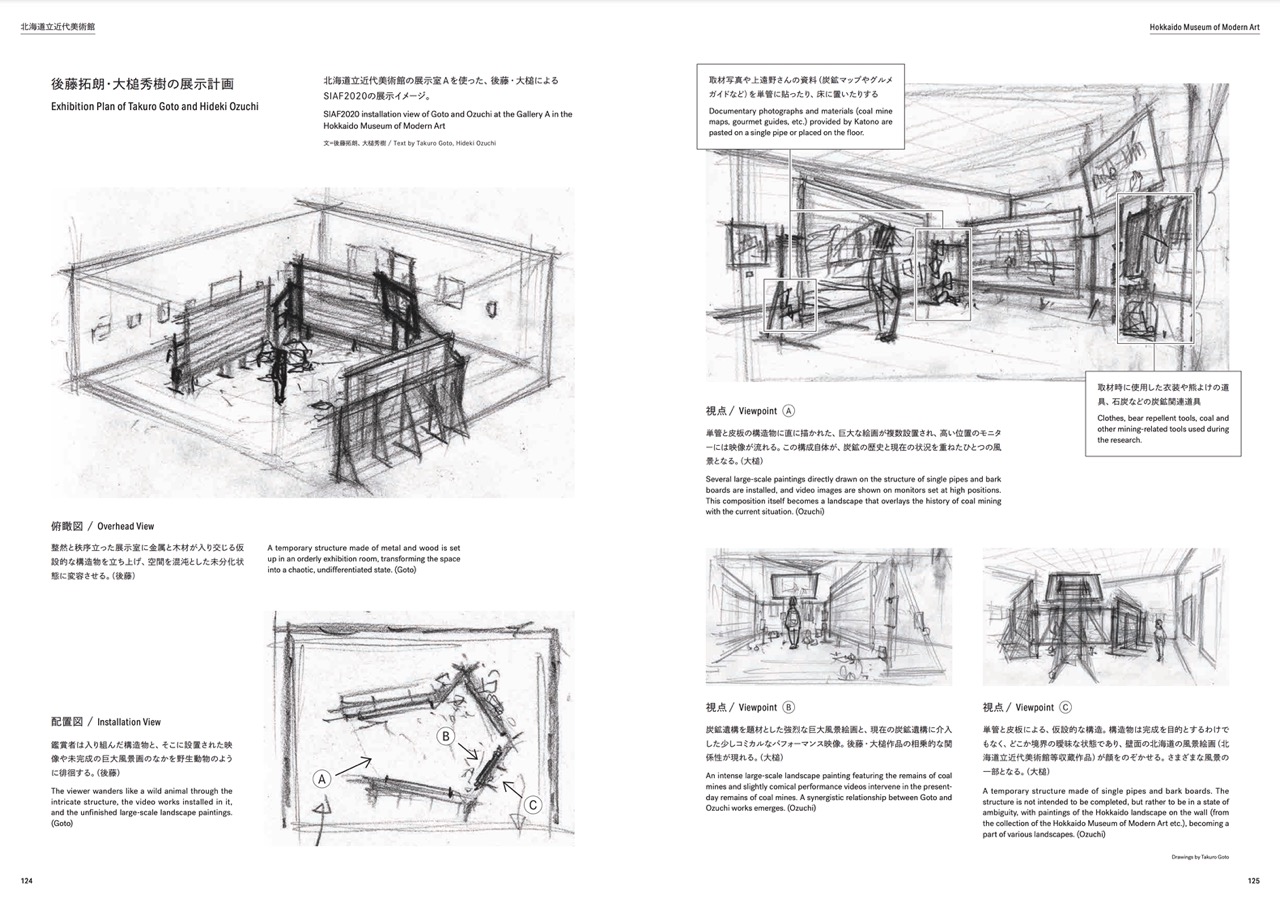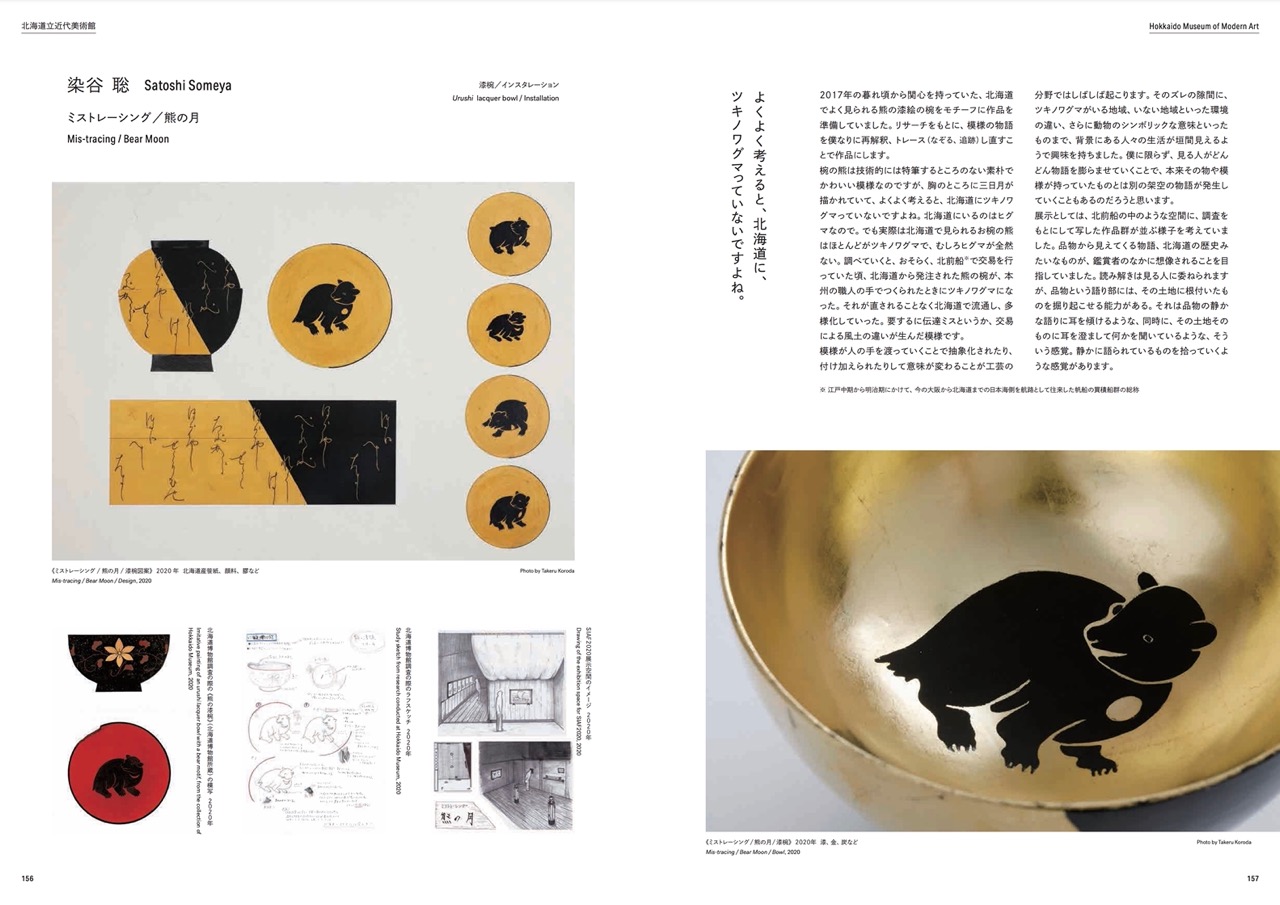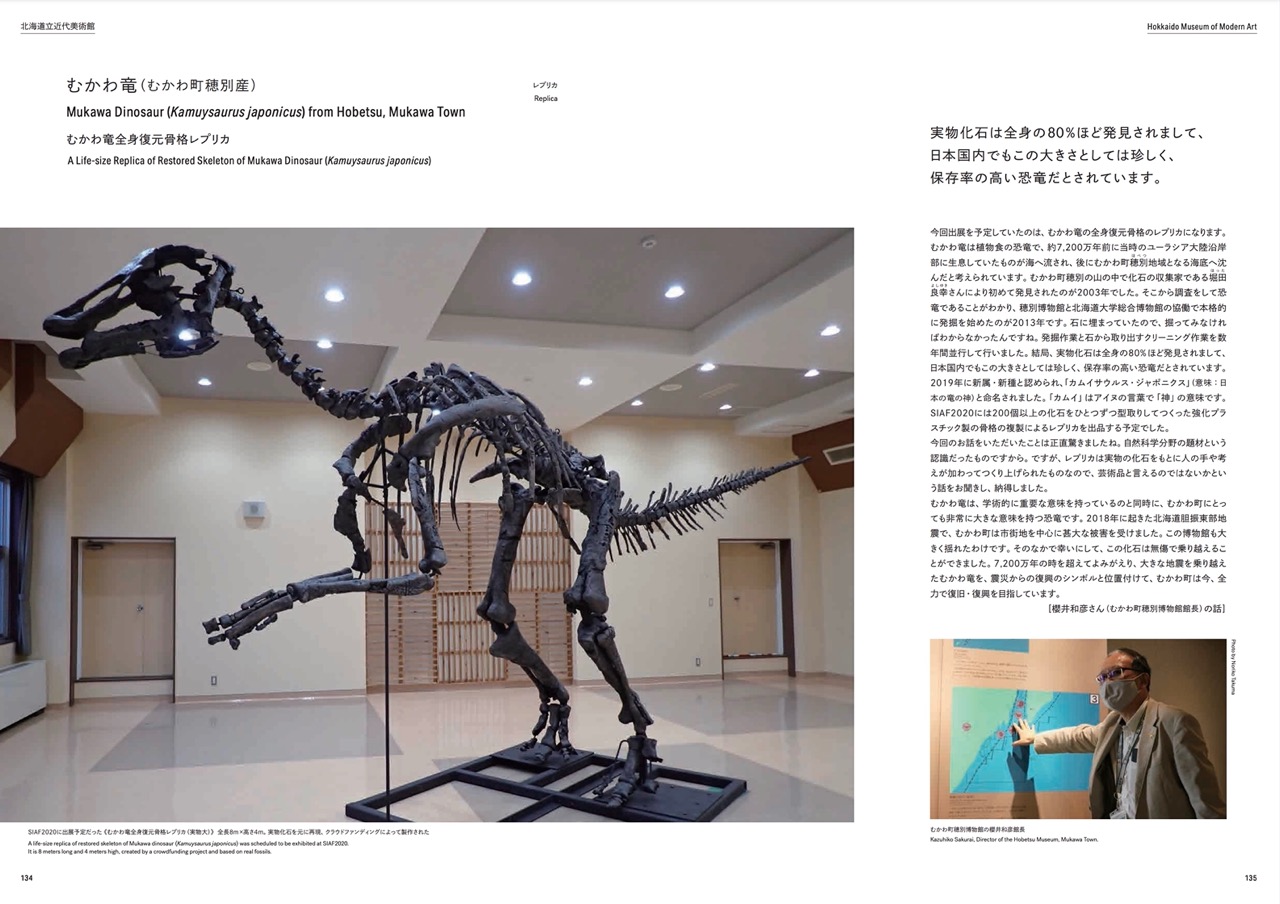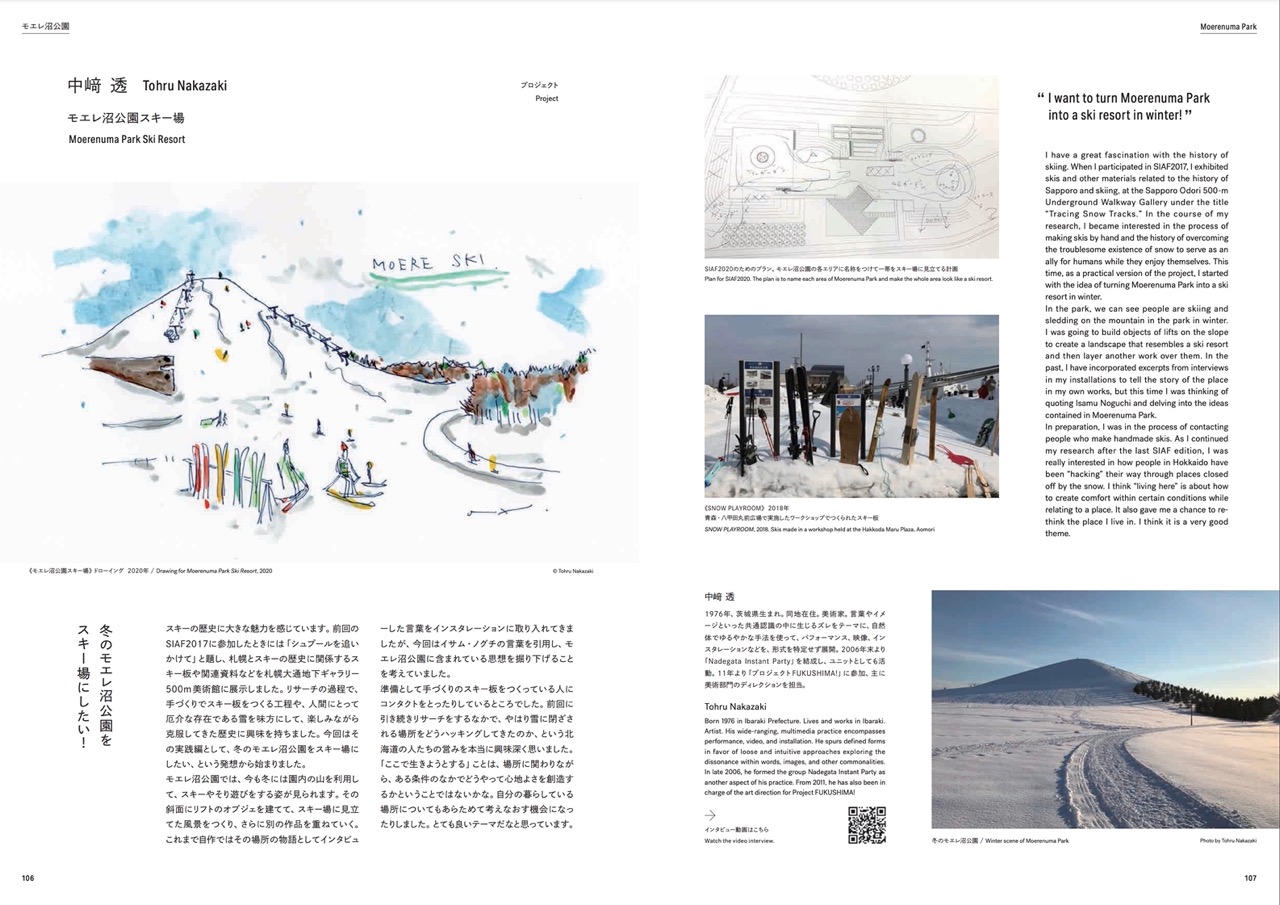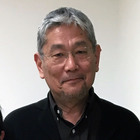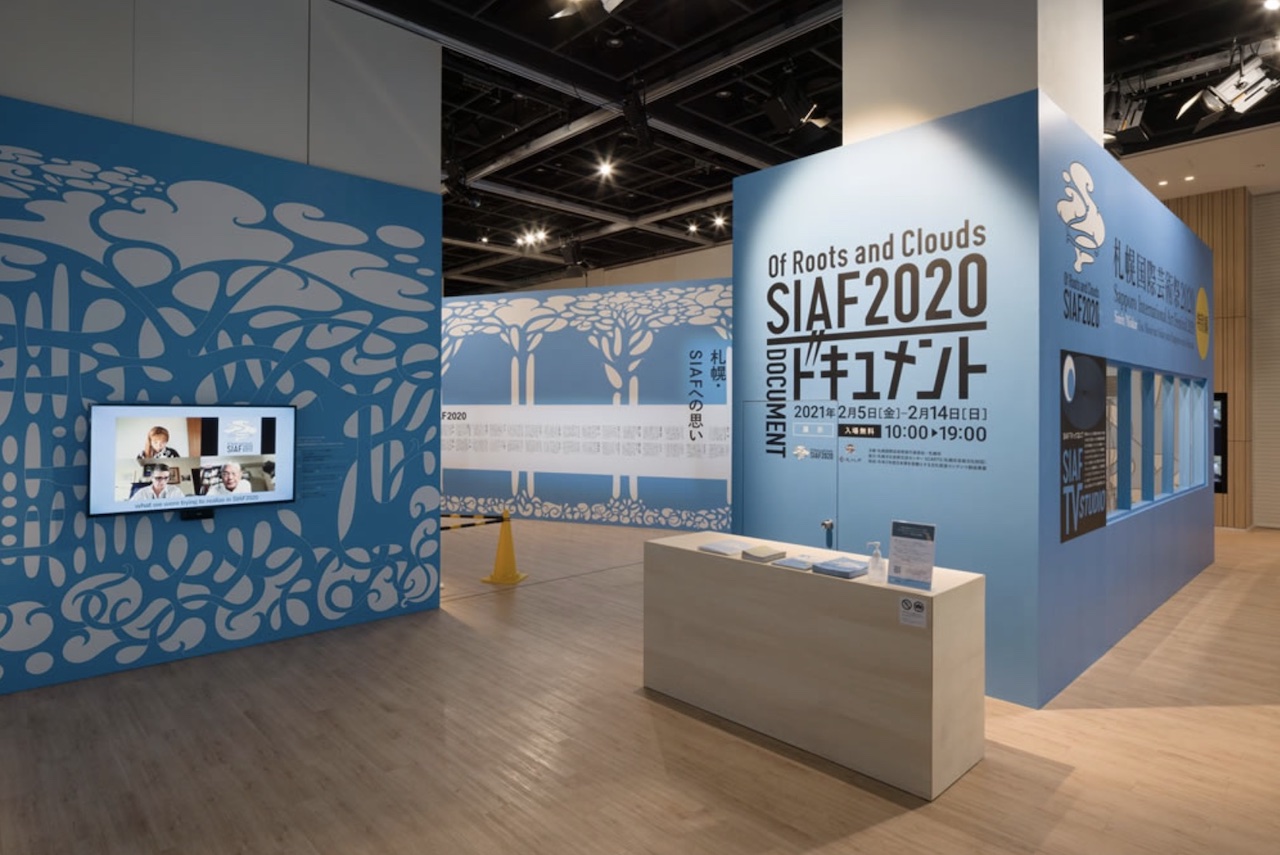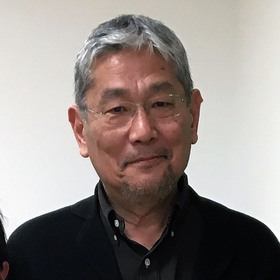The Cancellation of the Sapporo International Art Festival 2020
In January 2018, I had a meeting in Tokyo with the people involved in the Sapporo International Art Festival (hereinafter referred to as “SIAF”), and I was appointed as the director of the next SIAF in 2020. Actually, I had been an advisory member of SIAF up to that point, responsible for selecting directors and giving various advice, so I thought the meeting in January was also about the selection of the next director. I honestly did not expect that I would be the one to be the director, rather than promoting someone else as the director. In the end, there were three directors, and I was asked to oversee the whole process.
After being appointed, work began to organize the festival team and to think about the theme and other concepts, but there was one thing that I clearly wanted to do. The director of the festival may indeed be selected from outside of Hokkaido, but for the other curators and coordinators, I wanted to insist on the participation of local people as much as possible. Having overseen the Yokohama Triennale as a curator at the Yokohama Museum of Art and having visited other international exhibitions in Japan and abroad, I was somewhat dissatisfied with the lack of participation by local people. I had thought that since such an opportunity was rare, not only could they gain a variety of experiences, but they would also accumulate these experiences in their hometowns. Unlike Aichi and Yokohama, Sapporo does not have a large main venue. The Hokkaido Museum of Modern Art, a facility of the Hokkaido prefectural government, has been a venue for this event in the past, but the museum's curators did not participate, and the museum was merely considered as a rental venue. This time, the participation of the curators was highly recommended, not only those in charge of the city facility where the festival will be held, but also those in charge of the prefectural facilities.
Starting in 2014, SIAF has been held every three years in a triennial style, and following 2017, the third was about to be held in 2020. While the first and second were held in the summer, the third, in 2020, was shifted to the winter. To make the SIAF unique, careful consideration was given to the starting time of the festival, which was initially held in the summer to showcase the beauty of nature, but for this third event, we decided to hold the festival in the winter with snowy scenery that could not be seen anywhere else, to take advantage of the great benefits of Sapporo, Hokkaido.
In addition to highlighting the special characteristics of the host city Sapporo through the timing of the festival, SIAF has always placed media arts as one of the pillars of each event and has always considered current trends. This is because while many municipalities in Japan have adopted a Creative City policy, Sapporo, as part of its Creative City Sapporo initiative, sought to join the UNESCO (United Nations Educational, Scientific and Cultural Organization) Creative Cities Network in the field of media arts, and in November 2013 it became the second city in the world and the first in Asia to be certified as a Media Arts City by the organization. It is essential for an art festival to include not only media art but also fine art in its structure, but for the third festival, the important task was to create a concept that would cross the boundaries between media art and fine art.
As we are already 20 years into the 21st century, we have moved from the former analog age into the age of a full-fledged digital society, which includes the development of social infrastructure, and IoT and AI are having a far-reaching impact on our daily lives in general. The same is true of media art, and the concept of interactive artwork is also shifting from an age that relied on equipment (devices) as technology to operational systems that control integrated management of these devices.
As if in response to these changes in media art in the digital age, the field of fine art as an analog medium also faces several challenges. An important concept that has supported fine art (modern and contemporary art) has been the clear delineation of originality and duplication (reproduction). For example, at least in Japan, the plaster masters of bronze sculptures are designated as National Treasures and Important Cultural Properties. In other words, the plaster masters are the originals, and the bronze statues created from them are considered to be reproductions. The plaster master of Morie Ogiwara's bronze sculpture Woman (1910), for example, is designated as an Important Cultural Property.
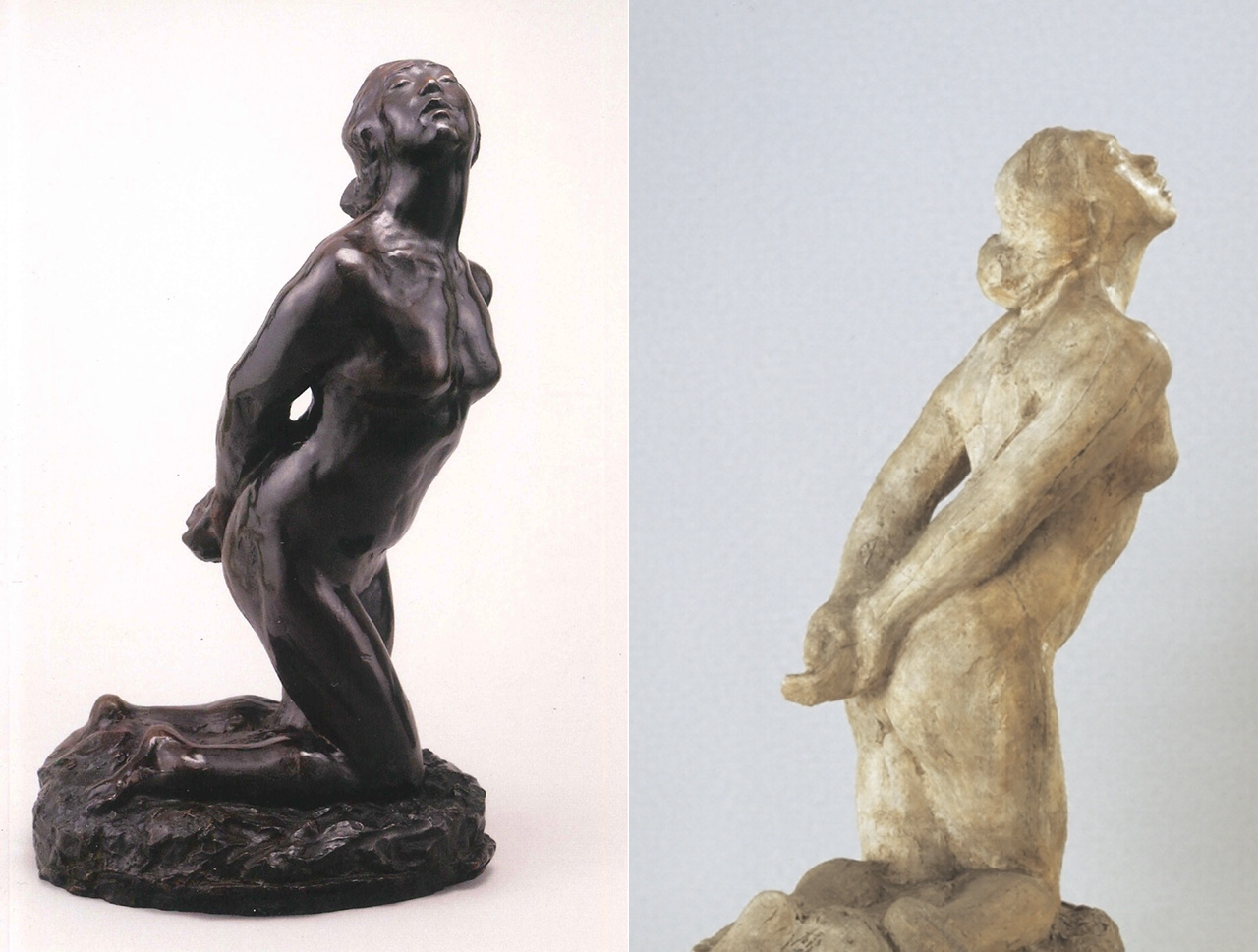
Left: Woman (1910), Morie Ogiwara
Right: Plaster master of Woman, Morie Ogiwara (Important Cultural Property)
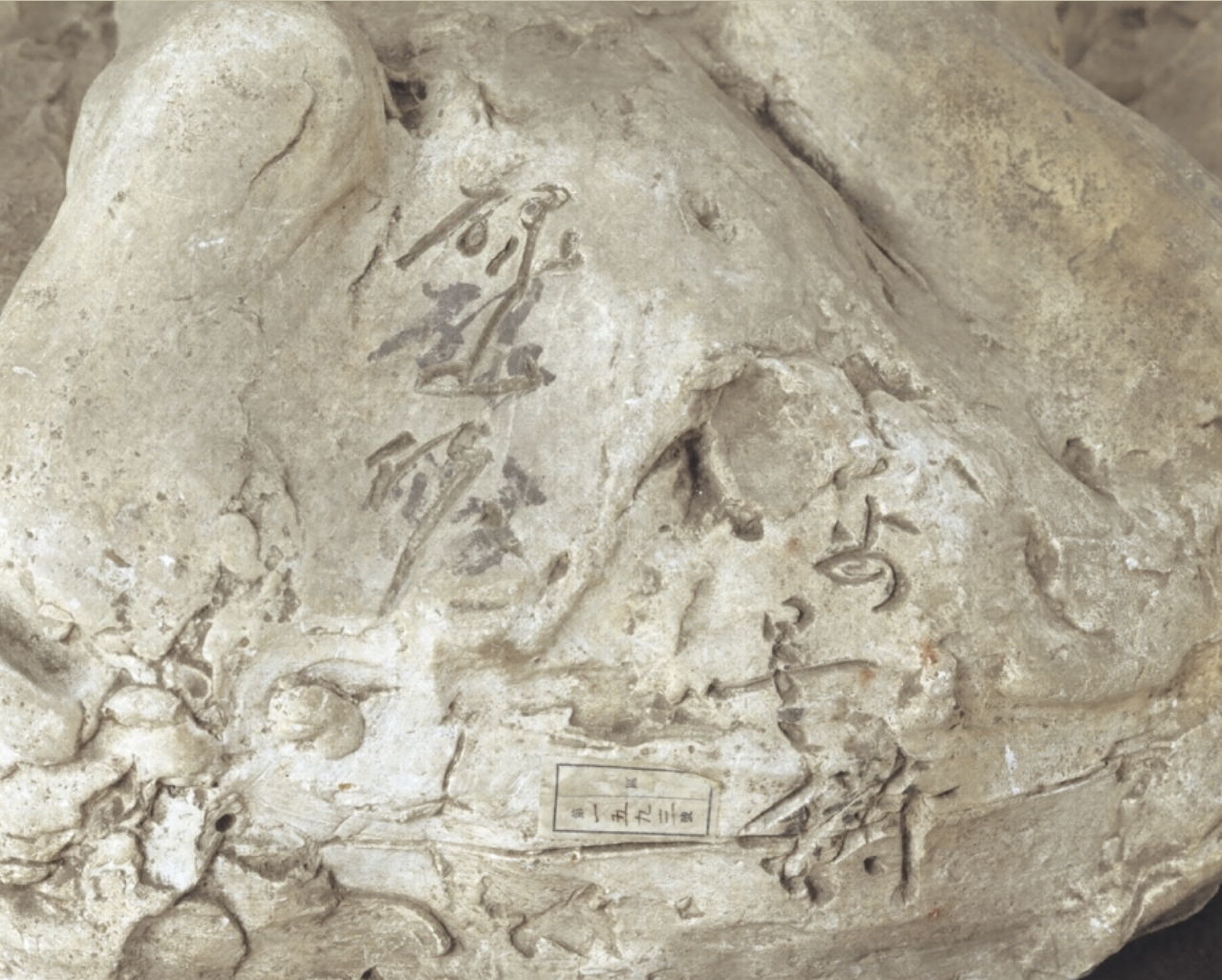
Back of the base of the plaster master
Even in the reproduction technology of photography, which emerged in the 19th century, the relationship between the original and the reproduction can be seen in the film and the prints produced from it.
On the other hand, in the case of photographs and video works created with the advent of digital technology, the equivalent of analog film is data. This data is information in the binary system, in other words, the artwork. Here, the form and concept of originality of the artwork as an object is no longer valid, and at the same time, the uniformity of the form of content is dissolving the independence of the field (such as photography and video), which is another important concept of modernism. In addition, differences in the format of the equipment (e.g., cameras) and the versions of the operating systems and applications that operated the equipment at the time these digital works were created pose new challenges in terms of preservation and management. The public also faces the problem of images once captured digitally becoming difficult to reproduce due to differences in the versions of the devices and operating systems that reproduce them, and this is another testament to this problem.
As mentioned above, the reproduction of original data in the digital age has resulted in the invalidation of the former hierarchy of original and reproduction in the analog age by having the same content as the original, rather than being a duplicate. These challenges and adaptations to the digital age at various levels themselves occupied an important place in the theme of SIAF 2020.
Based on this theme, Agnieszka Kubicka-Dzieduszycka, the Polish curator in charge of media art at SIAF 2020 (WRO Center for Media Art Foundation), proposed Senster (a compound of Sensitive and Monster) as one of the artworks to be exhibited. This artwork, a kinetic sculpture * created by Polish-born, London-based sculptor Edward Ihnatowicz and exhibited in 1970, is one of the most famous works in the history of media art. Commissioned by Philips, one of the leading manufacturers of electrical equipment at the time, Senster was exhibited from 1970 to 1974 at Philips' Evoluon science and technology exhibition hall in Eindhoven, the Netherlands. Although it was in fact a pioneering work that foreshadowed today's digital society, it was lost and forgotten for a long time after its exhibition, until satellite images revealed its body in 2014 in Colijnsplaat, Zeeland, southwestern Netherlands. A project to recreate Senster was then born, led by Anna Olszswska, a research fellow at the AGH University of Science and Technology in Krakow, Poland, which led to the current exhibition.
*Kinetic sculpture: a mechanical object that is moved by motive force or human power, as opposed to a static sculpture
It is a 5-meter-long steel artwork whose movements are controlled by a computer, utilizing the most advanced robotics, artificial life, and artificial intelligence technologies of the time. According to Olszswska, who directed the project, Ihnatowicz ingeniously incorporated the concepts of feedback loop and control engineering into his work at a time when his interest in cybernetics was at its peak. To introduce the historical background of this period from multiple perspectives, SIAF 2020 planned a related exhibition with Olszswska and Ma Jung-Yeon, a well-known artist in media art research, as advisors, considering the perspective of media art in Japan at that time.
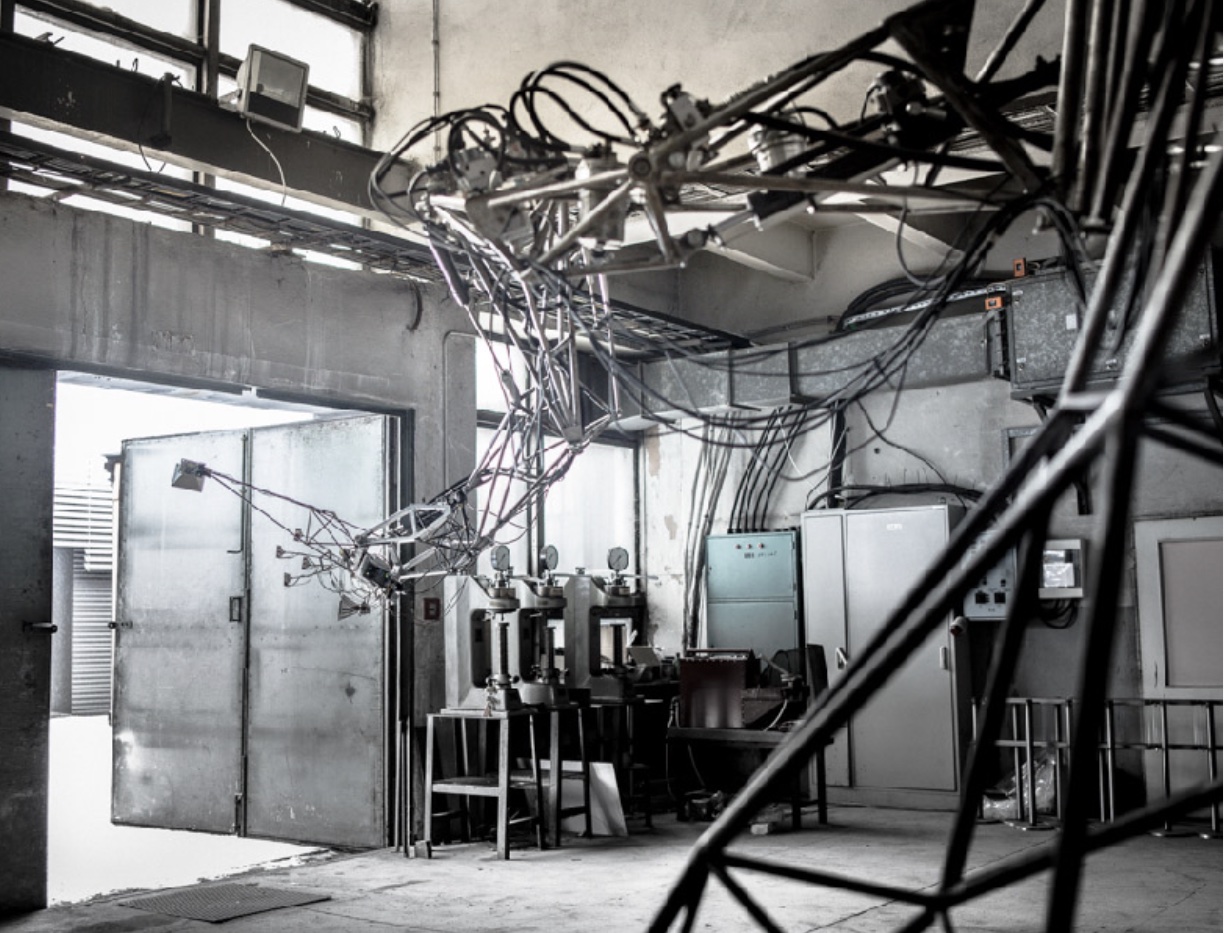
Senster (2019) placed in the production studio of the AGH University of Science and Technology Photo by Adam Żądło / Courtesy of AGH UST
Incidentally, another interesting artwork or project from the perspective of new conservation/preservation of digital artworks is Seiko Mikami's Desire of Codes (2010), which was scheduled to be exhibited at SIAF 2020. Unlike the analog restoration of fine artworks such as paintings and sculptures, this work highlighted the difficulty of handling equipment that is part of the work and often the work itself.
In general, the issue of copyrights directly held by the creator of the artwork, such as how to reproduce not only the components of the original artwork but also the operating system as software, as well as the copyright of the company producing the equipment, also complicate the issue of conservation and preservation of digital works of art. In any case, as media art is becoming an everyday part of our digital society, we at SIAF were conscious of the fact that it is not simply a field of art but is also something that is close to our daily lives in modern society.
![Desire of Codes, 2010, an artwork that was scheduled to be exhibited at SIAF 2020 Photos by Ryuichi Maruo (YCAM) / Courtesy of Yamaguchi Center for Arts and Media [YCAM]](/data/column/uploads/with-corona-3-arts-in-covid-19-chord.jpg)
Desire of Codes, 2010, an artwork that was scheduled to be exhibited at SIAF 2020 Photos by Ryuichi Maruo (YCAM) / Courtesy of Yamaguchi Center for Arts and Media [YCAM]
Challenges and outcomes during the COVID-19 pandemic, looking ahead to 2023
Finally, the preparation for SIAF2020 was organized in 2018, with the planning team in place, giving us ample time to prepare for the festival. Under such circumstances, a press conference was held on February 7, about a year before the event, to announce the outline of the event and the first group of participating artists and artworks. Actually, I myself had asked the secretariat whether it would be possible to hold this press conference. In early February, the situation of the COVID-19 pandemic in Japan had not yet become serious, but on the other hand, a traveling exhibition of the photography collection planned by the Yokohama Civic Art Gallery Azamino, where I worked, was being held at an art museum in Chengdu, China, from the end of November 2019 through February 23, 2020. However, the COVID-19 pandemic had begun to tighten its grip, and the exhibition was temporarily cancelled due to the lockdown (it was eventually decided to cancel the exhibition halfway through), and on February 3, news broke that the cruise ship Diamond Princess, whose passengers were confirmed to be infected, had arrived at the port of Yokohama, so the situation was starting to look bleak.
But the press conference was held, and at this point it was announced that the festival would begin in December of the same year as planned.
Subsequently, the impact of the COVID-19 pandemic became more serious in Japan, and in April 2020, a state of emergency was declared, forcing many museums nationwide to close for about three months. While all of this was happening at the same time, preparations for SIAF 2020 were underway, but around June, people involved in the event began to wonder if it would be difficult to hold the exhibition during the scheduled timeframe. Ultimately, it was decided to cancel the event and, at the same time, to compile a record of the contents of the SIAF 2020 project, participating artists, ideas for artworks, and other information that had almost been known, and to publish them on the website and other media. The cancellation was officially announced on July 22, 2020. I myself was one who decided to cancel the event without hesitation. Although it was not the Olympic or Paralympic Games, which were eventually held, people's lives were still difficult at that time, and some restaurants had already been forced out of business. Under such circumstances, I could not motivate myself to launch an art festival.
On the other hand, since the policy of communicating the entire contents of the event through various media, including the website, was already indicated, the volume of work that followed was almost the same as the preparation for the actual art festival. Here, we took the approach of presenting the voices of the participating artists in full, mainly through interviews, with the directors and curators playing a supporting role. This was a unique opportunity for us to conduct a series of time-consuming interviews with the creators (artists) of the artworks, as previously we only had their artworks at art festivals and museum exhibitions but never their personal presence including their voices. In addition to streaming these interviews, an introductory exhibition titled SIAF 2020 Document was held at the Sapporo Cultural Arts Community Center SCARTS from February 5 (Fri.) to 14 (Sun.), 2021. Besides introducing the artworks that were scheduled to be exhibited with photographs and other materials, the exhibition included messages to Sapporo from the participating artists, scenes of preparation by the artists who had visited Sapporo, Hokkaido, to create the artworks, the Senster piece, with a display using images of Kamuysaurus, a full-body restored skeletal replica of which was scheduled to be exhibited. A special website available at the SIAF 2020 Special Edition and a corner for experiencing the art mediation program were also set up. During this period, the SIAF TV (official YouTube program) streaming studio was set up at the venue with the full mobilization of the secretariat staff as well as local people involved in the event, and contents were live-streamed from the studio every day.
Another major accomplishment was the publication at the end of March of the SIAF 2020 Index, a collection of records that fully utilizes the voices of the participating artists as manuscripts, which was edited concurrently with the live streaming.
In fact, the title of this publication was chosen based on my proposal. I bring this up because, after more than 30 years of working as a curator, creating titles for exhibitions, texts, and other publications has always been my weakest point, and this is the first and last time I have accomplished such a feat. Although this is a publication related to the canceled exhibition, it is not a catalog because the artworks were not actually exhibited. Rather, the purpose of this publication was to allow readers to freely assemble the information on artists, artworks, and their respective concepts to create their own SIAF 2020, and we realized that the individual information in this case would serve as an index, so to speak, and this is how the title was chosen. This concept was also utilized in the Matrix, which will be introduced next.
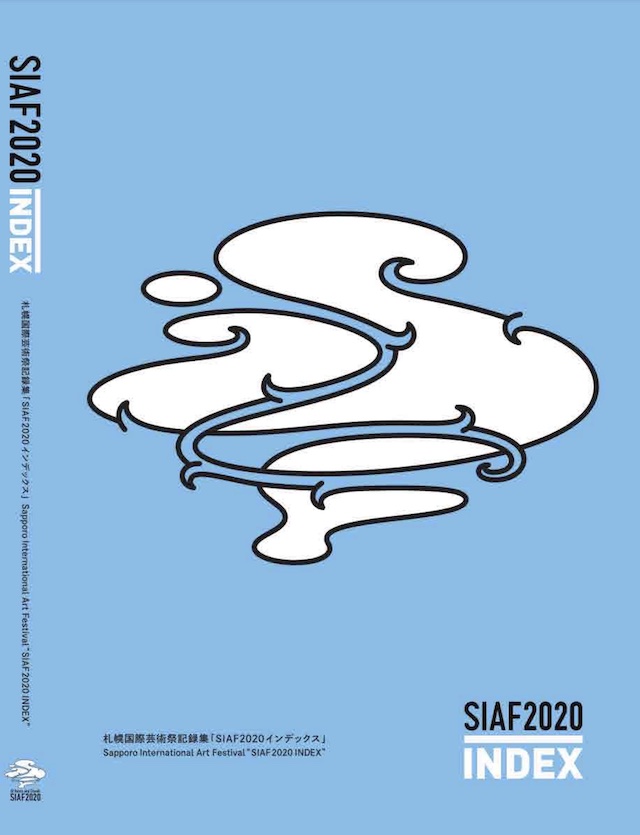
SIAF 2020 Index, a collection of records
SIAF 2020 Document, Scenes from the venue
Photographed by Tsubasa Fujikura
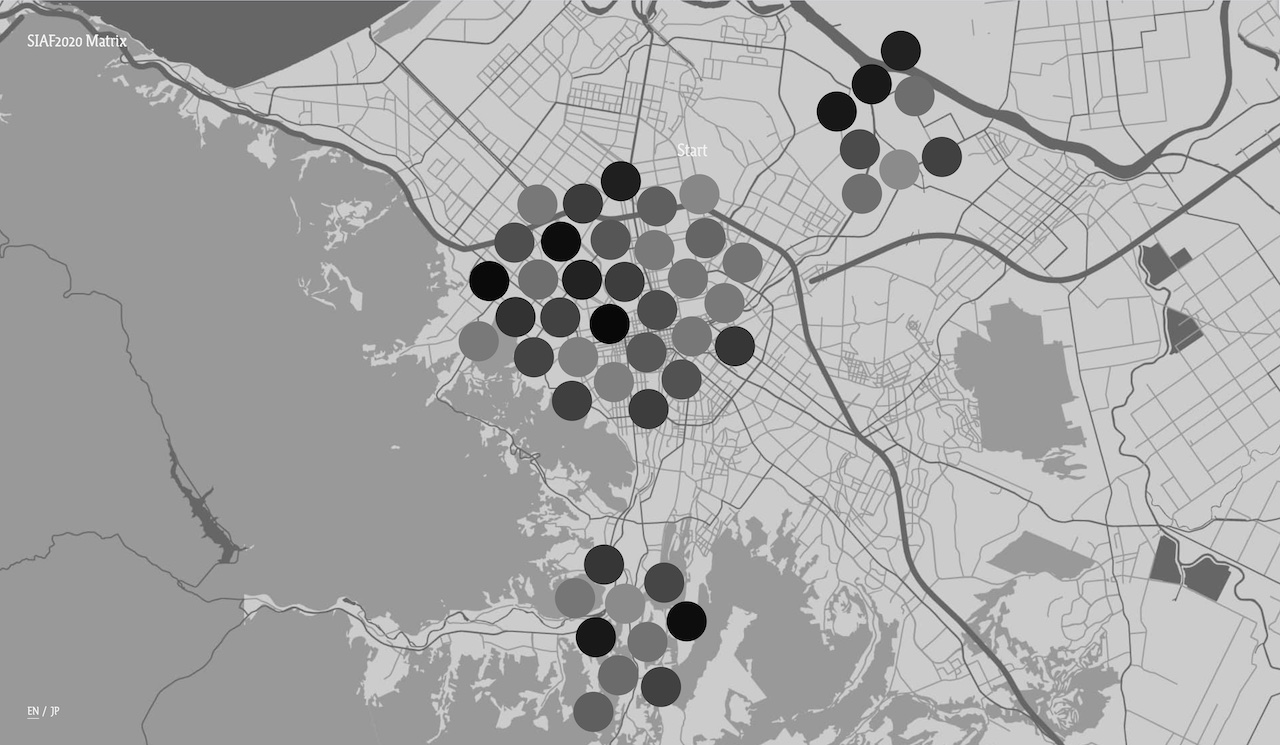
SIAF 2020 Matrix was released as a version of SIAF 2020 to be viewed online. Objects reflecting the coordinates of each artwork, which were supposed to be placed in the city of Sapporo, react interactively to the user's manipulations. According to Agnieszka Kubicka-Dzieduszycka, the planning director, it is "a prototype (matrix) of an exhibition that allows visitors to read, see, and listen to various records while feeling the absence of the artworks in their planned locations." Co-curated and produced by Qosmo
https://siaf2020matrix.jp/jp/
SIAF was cancelled this time, but it has left its substance in an unprecedented alternative way by making full use of various contents and by distributing them. The timing of the preparations, the decision to cancel the art festival, and the timing of its distribution coincided with the time to review the vulnerabilities of our country's digital infrastructure, which were unexpectedly exposed during this unimaginable situation brought about by the COVID-19 pandemic, and this became an issue for deep consideration in relation to the rationale for holding the art festival. The fourth SIAF, to be held after the COVID-19 pandemic, will reflect on this unprecedented human experience and show us a new direction, and hopefully SIAF will have played a small role in bridging the transition.
From the collection of records, SIAF 2020 Index.
The artists' conceptions of their works were presented along with sketches and images of their works
